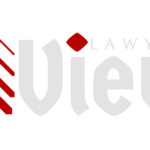Engineers, doctors, surgeons, architects, marketers etc. are all
great and reputable professionals but you will often find some
of them drowning in debt or engulfed in other financial
problems. This is mainly because their academic discipline has
prepared them to perform a certain task impeccably but hasn’t
prepared them to effectively manage their finances. If you dream
to live your life without facing any financial difficulties then
rather wasting your time sitting in the pews of church and day
dreaming about financial paradise, you should hustle up start
taking some actions. The first and the foremost thing you
should do is to educate yourself about the basics of personal
finance, so that at least you can calculate your own financial
position and can then plan to improve it.
When it comes to planning one’s life, most professionals find
themselves uneducated about finance in order to make astute
financial decisions for their future. This is where finance
professionals, who know how the money works, have an unfair
advantage. But the subject of money management and personal
finance can easily be learnt by anyone.
We don’t mean that you need to become some finance geek in
order to make good personal financial decisions, but at least
you should know the basics of personal finance in order to
avoid falling prey to greedy bankers who use complex
terminologies that represents a very simple idea.
Personal Financial Statement Templates
Knowledge of personal finance equips and enables a person to
not only face financial difficulties with courage but also solve
them prudently. Having a basic knowledge of personal finance
will make you feel more confident as you will be the one
controlling and in charge of your own finances and not
dependent on someone else.
Well, you may be thinking that if the education of personal
finance is so important then why it isn’t taught in schools?
That’s a great question pal, but unfortunately education
planners of our country believe that there are many other
important topics that should be taught in schools that’s why
education of personal finance is neglected. Thus, whatever a
child learns about personal finance and money, he learns from
his home, and since most parents themselves are ignorant
about the topic of money management and personal finance,
this makes their children ignorant about this important subject
too. This isn’t some hypothetical situation, it’s the reality of our
country.
What Exactly is a Personal Financial
Statement?
You may have heard about the term financial statements
previously and you may have an idea that it is some sort of
statements that lists down random numbers that are said to
depict the financial standing of the company. Well, financial
statements are not only for the companies, an individual can
also have his/her own financial statements that are referred to
as ‘Personal Financial Statements’. They are mainly used when
a person is planning to apply for a loan.
This document gives a holistic view to the credit officers of a
bank or any lending institution about a person’s financial
muscle so that the banker can make an informed decision about
what should be the credit limit of a particular person. The most
common sections in any personal financial statement template
include information related to total assets and total liabilities.
Uses of a Personal Financial Statement
Well, now you know what a personal financial statement is, it’s
time to reveal some of its most common uses.
1. It is used when applying for a loan
2. It is used for effective financial planning
It is used to determine the amount that you should
save
When Applying for a Loan
You’d be fooling yourself if you believe that you will never need
a loan. Your credit card in your wallet is a devise through which
you will always remain balls deep in debt. Apart from this if you
ever plan to attend a college you will need a loan or if you ever
decide to start your own small business then you would be
required to borrow money in order to guarantee smooth day to
day operations of your business. For all this, Mr. Banker will
require you to submit your own personal financial statement.
After vetting this personal financial statement, the credit officer
in a bank or any lending institutions will determine how much
credit facility should be extended to your small business.
For Financial Planning
Financial planning is the difference between a penurious and a
well off person. If you know nothing about your current
financial situation or your net worth then it’s time that you set
everything else aside and visit our website and download a
personal financial statement’s template through which you can
easily calculate your net worth. No need to be terrified, horrified
and petrified if you find your net worth is in negative numbers,
rather you should start taking steps to reduce your liabilities
and increase your income generating assets. But remember, all
this will start with correctly filling out a personal financial
statement form.
For Saving Purpose
If you are not maintaining and updating your personal financial
statement then we would like to inform you that it’s a perfect
recipe for a failure because you will likely not be able to save
money for the future. A personal financial statement will allow
you to pay yourself first i.e. set money aside for your savings
before you pay your bills or spend it carelessly. You will be
well informed of the expenses and the uncovered liabilities and
thus will be in a position to reduce it, so that you can save
more. Remember, the money that you save and invest today will
compound in the future.
Elements of a Personal Financial Statement Template
Rather than beginning from scratch for drafting your personal
financial statement you can download a personal financial
statement template from our website and can then enter all the
numbers required after which you will be able to see your net
worth at a particular point in time. Before you begin to use a
particular template it is important that you know what sections
a good personal financial statement template, one that give a
true and fair view of a person’s financial standing, should have.
Following are the four major sections that you will find in
almost all personal financial statement templates.
1. Assets
2. Liabilities
Annual Income
1. Expenses
Assets
Every good personal financial statement will first list down all
the assets that an individual possesses. You may be thinking
that it’s too obvious, but it’s not. If we ask you what your most
valuable asset is, what would you say? Well most household in
US believe that their home is their most valuable asset that they
have purchased. If that’s your answer too then you have no
idea what asset means.
An asset is something that puts money into your pocket
periodically and your home, according to this definition is not
your asset because your home takes money out of your pocket
through bills, taxes, renovation etc.
Items included in the asset column of your personal financial
statement include cash that you have in the locker of your
house and your bank balance. Also, the cash value of your
investments in stocks, bonds or any other investment vehicle
will also be recorded in the asset column of your personal
financial statement.
If you own a property for investment purposes like for renting it
out then you can also record the cash flow generated from such
investments in the asset column of your personal financial
statement. Also, other assets that are liquid and can be
converted to cash readily can also be listed in the asset column
of your asset.
In some personal financial statement templates you will see
that there is a distinction between current and non-current
assets. This distinction is not very important for you as a
person. However, for the sake of your information, current
assets are those that are liquid and can be converted to cash in
a short period of time, while non-current assets are illiquid
assets that do not have a vibrant and robust secondary market
and therefore needs a large amount of time (weeks or
sometimes even months) to be sold. A real estate is a perfect
example of non-current asset. Now let’s move on to discuss the
next section of a good personal financial statement template.
Liabilities
A liability is the amount of money that you have to pay i.e. the
money that you owe. In this section you will list down all the
sources to whom you owe money and also the amount that you
owe. Loan taken out from a bank, taxes due, mortgage
payments due and any other debts will be listed in the liability
column of your personal financial statement. If you can’t
remember your creditors then it’s better to use a personal
financial statement template that already has some basic and
obvious creditors listed in the template.
If you are living in a rented house then the monthly rent
payments that you make is your liability that you have to pay,
come what may. If you do not honor/settle your liabilities on
time then it will adversely affect your credit rating. Nobody
wants that.
Just as in the case of assets, liabilities too are divided into
current and non-current liabilities. A current liability is the one
that you have to settle within the time period of one year (short
term) while non-current liabilities are ones that are due after
one year (long term).
These numbers listed in your personal financial statement are
used to calculate your net worth. It is done by first calculating
your total assets and total liabilities and then subtracting your
liabilities from your assets, in other words, you have to subtract
the amount that you owe from the amount that you own. The
figure calculated by this formula will give you your net worth. If
it’s positive, congratulations on your good financial standing,
however, if it’s negative then you got lot to look forward to.
Items present in the liability column of your personal financial
statement are your insurance premiums, credit card bills, federal
taxes, your upcoming mortgage payments, and/or any loan
extended to you by the bank.
For Personal Financial Statement Examples go to Legal Drafting.






